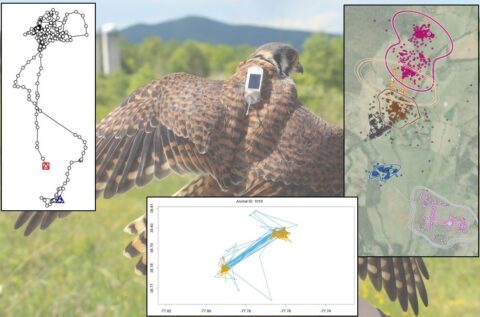
Animal Space Use and Movement Analysis in R - Online
- Importing, cleaning and manipulating animal movement data
- Estimation of movement metrics with adehabitatLT (e.g., displacement distances, step lengths)
- Assessment of behavioral states using hidden Markov models in moveHMM
- Home range estimation approaches using adehabitatHR and ctmm
- Various methods for assessment of species-habitat associations including resource selection functions, and step-selection functions
- Least-cost path analysis and related approaches for assessment of connectivity
- Static and interactive visualization of animal movement data using tmap and ggplot
- Dates
October 20 – December 14, 2025
- Available Formats
Graduate (CONS 697, 3 credits)
Professional Training (SMSC 0535, 6.0 CEUs)
- Cost
Graduate: See Mason’s graduate tuition rates
Professional Training: $500.00
- Deadlines
Apply by August 18, 2025
Payment due by September 1, 2025
Meet the Faculty

Smithsonian-Mason School of Conservation
Course Content
This asynchronous online course teaches the latest approaches for the summary and analysis of animal movement data in the R environment and the application of these data to research questions involving home ranges, movement behavior, habitat selection, and connectivity. The goals of the course are to: 1) teach the core themes and concepts underpinning animal movement behavior and the determinants of animal space use; 2) familiarize participants with the range of tools available to import, clean, summarize, visualize and analyze animal movement data in R and 3) expose participants to the challenges and potential biases inherent in movement data, and how to address them at the design and analytical stage.
The course will cover 5 main topics: 1) Description and summary of animal movement data including displacement distances, step length and turning angles, assessment of autocorrelation, and model-based assignment of behavioral states; 2) Home-range estimation using a range of methods in adehabitatHR as well as auto-correlated kernel density estimation with ctmm; 3) Analysis of species-habitat associations including resource selection functions, conditional logistic regression, and an introduction to step-selection functions; 4) Connectivity modeling including least-cost path analysis and related methods using gdistance; and 5) Visualizing movement data with tmap and ggplot.
As with our GIS in R course, this course closely integrates tidyverse functions with GIS tools to develop efficient and intuitive coding. Exercises will rely on the sf package for vector data and the terra package for rasters, though some use of sp and raster may be included. The class will utilize real-world animal movement data in all exercises and will include the use of Movebank for storage and downloading of movement data as well as extraction of environmental variables. Note that this course does not include species distribution models (SDMs).
Course Format
This format is designed to make it as accessible as possible to both professionals and graduate students who may be navigating complicated work and family schedules. Content is typically posted one week early for those looking to work ahead while time is available. Participants should expect to spend a minimum of 8-10 hours per week working through the course material and assignments. This minimum assumes comfort working in the R environment. Those participants requiring a completion certificate will be required to complete a subset of the weekly assignments in addition to the final project.
What’s Included
The total cost for professional training covers weekly access to:
- 2-3 hrs. of recorded presentations (slides with audio) introducing new theory and concepts
- One or more well commented demonstration code scripts teaching new analytical tools
- At least one analysis assignment, where participants will adapt the demonstration code to complete a novel analysis and answer a series of questions
- An optional live Q & A session (Fridays 1:30-2:15 pm ET)
- An optional live assignment review session (Tuesdays, 10:30-11:45 am ET)
- Two opportunities for “virtual office hours” with the instructor (times tba)
Software and Programs
All analyses will be performed in R, through the user-friendly interface RStudio. Although some pre-course work will be provided as a review, all participants are expected to be comfortable importing and manipulating spatial data in the R environment. The material covered in our online course GIS in R: Fundamentals and applications for ecologists should be considered as prerequisite knowledge for this course and anyone who has not previously worked with spatial data in R should first take that course. You’ll be asked to confirm your level of experience during the application process for this course.
Acceptance does not guarantee you a seat in the course. Seats are allocated as registration payments are received, and early registration is strongly encouraged to ensure you get a spot.
Email [email protected] for additional information.

